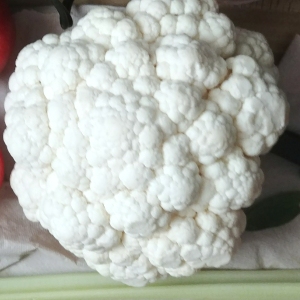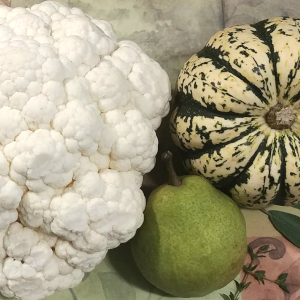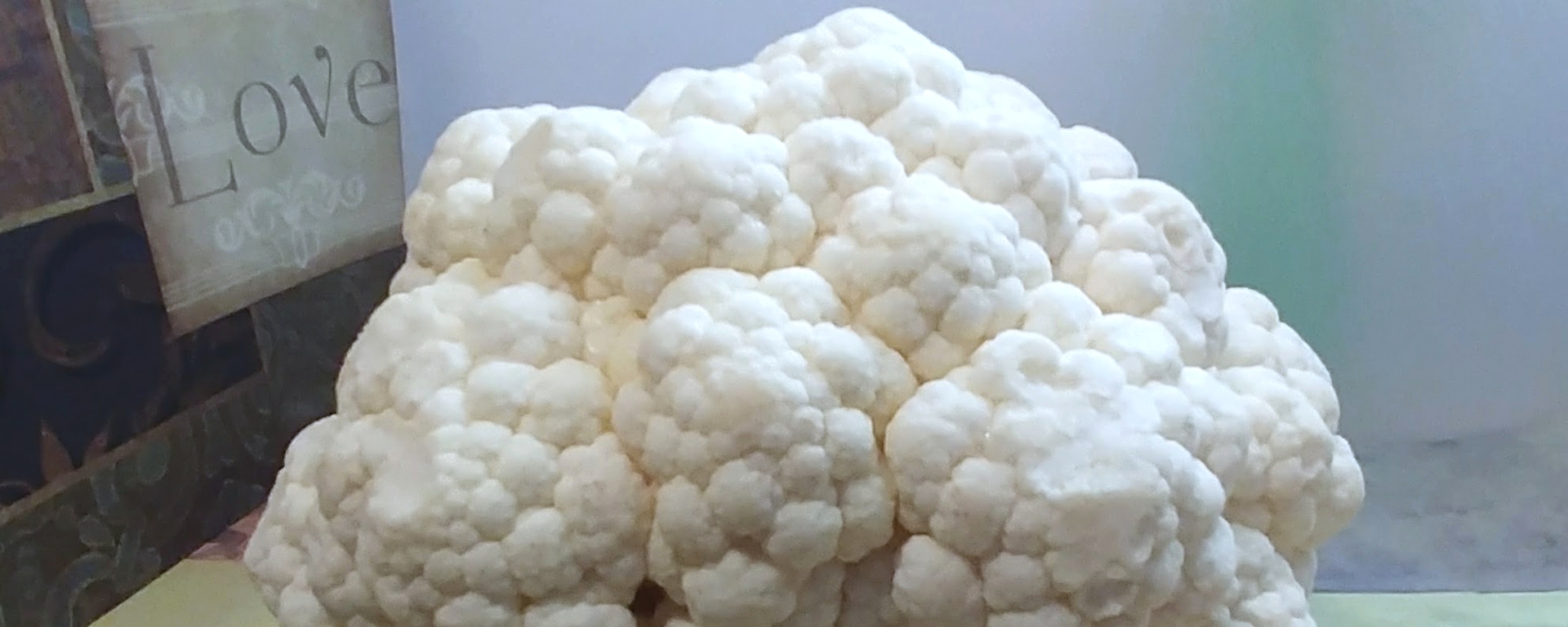Is Cauliflower Healthy for You? Cauliflower is considered very healthy for you. However, cauliflower is to be avoided if you have issues digesting foods high in fiber. High fiber foods may cause bloating and discomfort for some and sometimes can be accompanied by gas. If you suffer from digestive issues related to irritable bowel syndrome, inflammatory bowel disease, Ulcerative Colitus or Crohn’s Disease, then you may want to avoid cauliflower.. and check with your doctor before adding cauliflower to your diet.
This vegetable is also high in vitamin K… so if you’re on blood thinners or statins, then you need to talk to your doctor about adding cauliflower to your diet here as well because he may recommend you avoid the vegetable. Cauliflower may also keep the thyroid from absorbing iodine, so if you have thyroid issues, your doctor may again recommend you avoid the food.
Cauliflower is considered a superfood by many. It’s high in fiber and low in calories. Cauliflower is fat free, gluten free, and cholesterol free and is packed with nutrients like vitamin C and folate.
What is cauliflower?
 Cauliflower is actually Brassica oleracea, a modified form of cabbage from the mustard family of brassicaceae. Its grown for its partially developed flower structures and fleshy stalks. Cauliflower is a cruciferous vegetable and the most common color is white but the vegetable can be found in orange, purple, and green varieties. Other vegetables in the same family include Kale, cabbage, brussel sprouts and of course broccoli.
Cauliflower is actually Brassica oleracea, a modified form of cabbage from the mustard family of brassicaceae. Its grown for its partially developed flower structures and fleshy stalks. Cauliflower is a cruciferous vegetable and the most common color is white but the vegetable can be found in orange, purple, and green varieties. Other vegetables in the same family include Kale, cabbage, brussel sprouts and of course broccoli.
Can you eat cauliflower raw?
Cauliflower can be consumed raw. Like other vegetables in the cruciferous family, they are fine to eat raw for most people. Some people experience gas and bloating from high fiber and hard to digest sugars that are found in these raw cruciferous vegetables. Cooking these vegetables helps them become easier to digest.
If you suffer from digestive issues related to irritable bowel syndrome (IBS), irritable bowel disease(IBD), ulcerative colitis(UC), or crohn’s disease, you may want to rethink eating this vegetable raw as many with these conditions complain of digestive and abdominal discomfort. Raw cauliflower can be dipped in anything from ranch dressing to hummus. It makes a fine addition to a veggie plate. Riced cauliflower can be added to salads and veggie wraps pretty easily.
Is Cauliflower gluten free?
Cauliflower is gluten-free, cholesterol free, and fat free. Cauliflower riced or grated up can be a nice substitute in baked goods. Everything from pizza crusts to muffins can easily be made gluten free by substitution into your favorite recipes.
Each recipe varies as does the flour being used in the recipe but cauliflower can be used as a replacement anywhere you would normally have bread stuffing as a side dish (think rice pilaf).
Once cooked, cauliflower rice can be treated just as you would regular rice and can be added to recipes to make pilaf or stuffed cabbage leaves, stuffed tomatoes, or stuffed peppers.
How do you prepare and cook cauliflower?
Whether you are eating cauliflower raw or cooking it up, cauliflower is generally prepared the same way. I will usually rinse the whole head of the vegetable and cut the outer leaves off. Cut the florets off of the main stem the same as you would broccoli. The stem can be riced up or made into slaw.. or throw it away (again the same as you would broccoli). The florets are ready to cook.
If you are cooking the cauliflower plain by itself, steaming your cauliflower is the better way to go in my opinion. You could boil it but steaming will help retain a good portion of the nutrients where boiling your cauliflower will boil out the nutrients right into the water. If you’ve riced your cauliflower, (which can easily be done with a regular box grater), then you can add this riced version to any baking goods the same as you would carrots or zucchini.
Personally, I think you get more options with cauliflower because you can throw pie crusts and biscuits into the mix. Roasted cauliflower is my favorite way to have them and the cauliflower tends to take on a texture that makes them a great replacement for chicken wings in any wings recipe.
Once you cook your cauliflower, It can be loaded into a food processor and pureed. This makes for a great base to soups or sauces. Cauliflower goes well with many flavors and foods. Experiment to find your favorite variety.
How do you store cauliflower?
Fresh cauliflower should be stored in the fridge. This is one of those vegetables that benefits from fresh air so keep the bag loose that it comes in from the grocery store. Untie the knot or loosening the bag is usually fine. I usually will store cauliflower in a perforated bag or you can just poke holes in zip plastic bag. Moisture tends to be the enemy here so I will usually include a paper towel in the bag to soak up extra moisture the same as I would lettuce or leafy greens.
You can store cauliflower in the fridge as it comes from the grocery store without washing it. However, you should always wash your vegetables prior to actual use and that includes cauliflower. I actually do clean, brush or rinse most of my vegetables when they come from the store. Then I’ll store them as needed.. but in most cases its not required to clean your vegetables until you actually use the vegetable.
Can you freeze cauliflower?
Yes, you can freeze cauliflower. There’s an extra step of blanching your florets beforehand but there’s no issues in freezing the vegetable. First, cut the cauliflower into florets and then blanch the cauliflower for three minutes in boiling water. Then throw the cauliflower into an ice-water bath.This does not have to be acidulated water.
By following this process you’re killing the bacteria and preserving the nutrients while maintaining the vegetable’s texture and flavor. Drain the cauliflower and place the florets so they’re laid out to dry. Once dry, transfer to a freezer-safe bag and freeze until solid. You can thaw them before cooking but I’ll usually just go from freezer to steamer and cook til I like the texture.
What goes well with Cauliflower?
Cauliflower will work with most entrees as a side dish. Puree your cooked cauliflower and you have a soup that tastes great on its own with just salt and pepper… or you have a base that will give any creamy style soup a run for its money. Using pureed cauliflower as a soup base is like having a blank canvas to start with. You can literally add whatever you’d like to have in a soup.
Roasted cauliflower will go with almost any vegetable that is also roasted and you should have no problem mixing them in to your roasted veggie mix. Roasted by itself, cauliflower makes a great side dish to any meat or entree.
Season cauliflower lightly with salt and pepper for a simple preparation… however, lay on the sauce and spices if that’s what you like. Cauliflower takes very well to sauces and spices because of its texture and it’s compatibility with other flavors. These seasonings all work well. No preference here.. it’s certainly not the whole list.. these spices are in alphabetical order.

